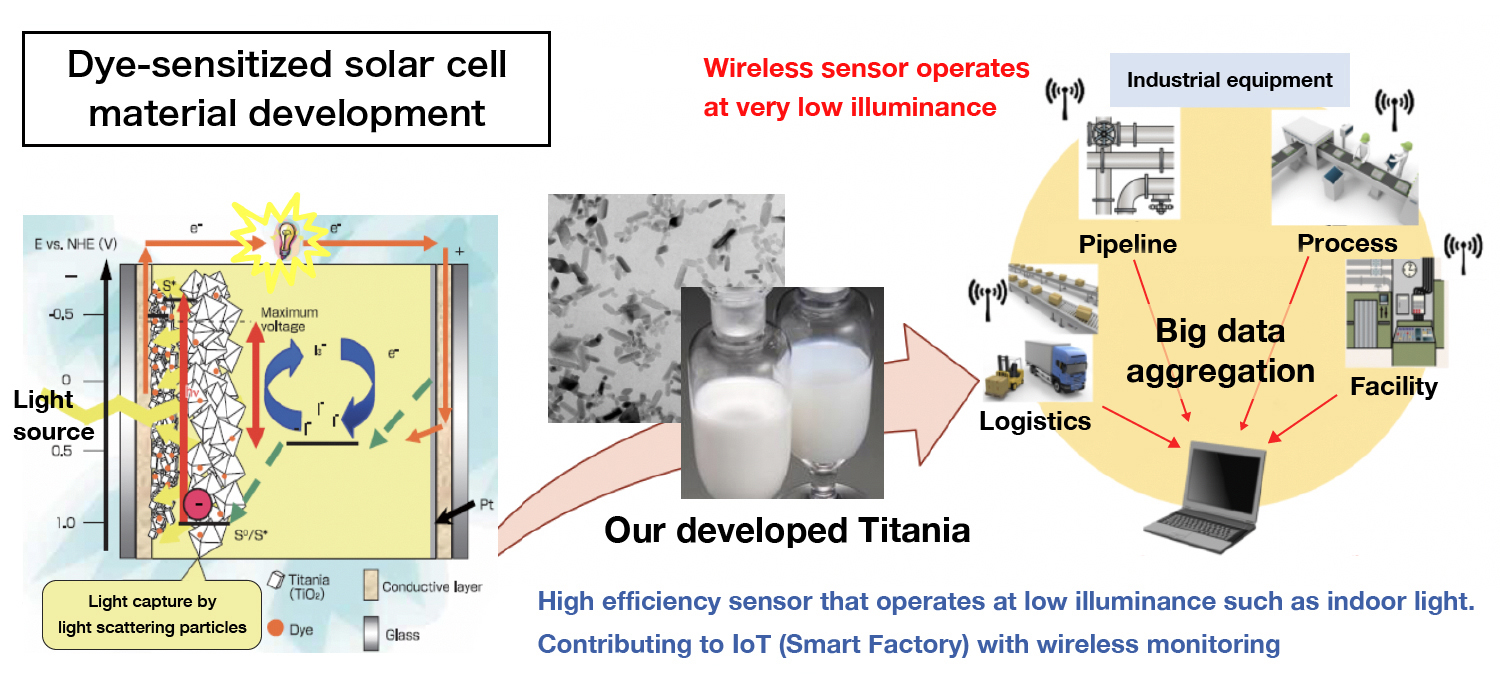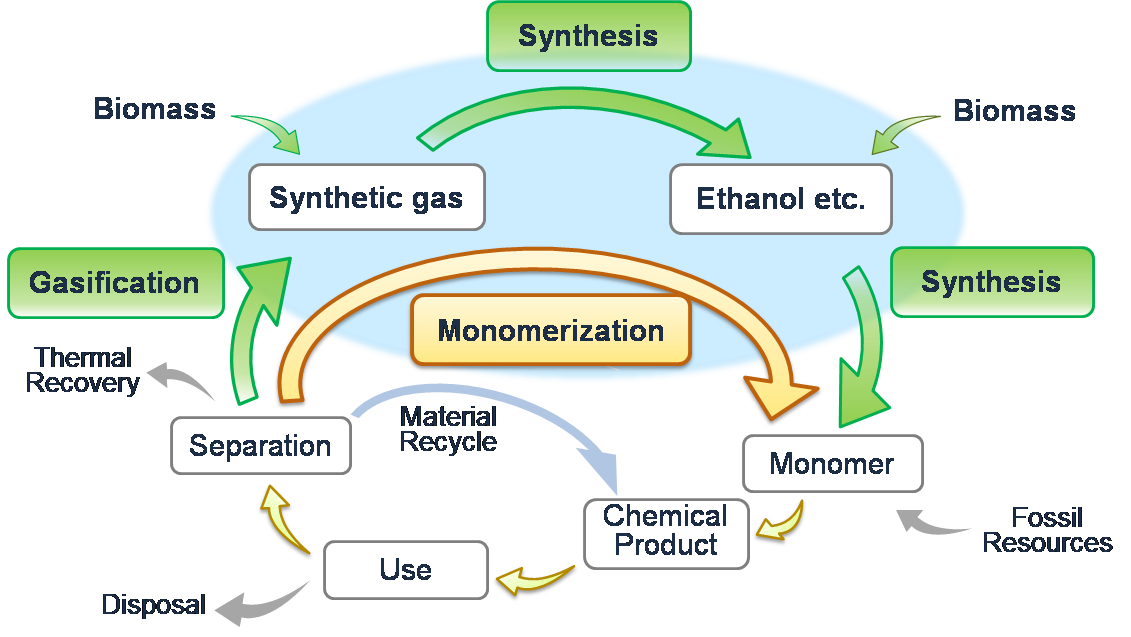Development of titania material for highly efficient dye-sensitized solar cells
JGC HOLDINGS CORPORATION
Outline
JGC Catalysts and Chemicals Ltd., the JGC Group's functional material manufacturing company, have been aiming to developing the Titania materials for high-efficiency dye (ruthenium complex)-sensitized solar cells (DSSC) which can be generated with low illuminance such as the indoor light. Those DSSC’s applications will be planned to apply as the power supply source to following IOT sensors. In recently planning the wireless sensors will be applied in the smart factory to monitor the equipment status, which leads reducing the maintenance loses with estimating the risk. And coordinated between the controlled equipment maintenance and energy control will be planned to lead the increasing the operation efficiency of the machine and saving energy loses.
Description
The power generation mechanism of the dye (ruthenium complex)-sensitized solar cell (DSSC) is as follows. Using an electrode (photovoltaic device electrode) coated with dye on a titanium oxide (TiO2) thin film, electricity is obtained using a redox reaction involving an electrolyte. As the result the die ink absorbing the visible light, charge transfer electron is injected into titania receives, and transfer in the conductive layer. Consequently, on the anode, iodine ions are oxidized the from (I3⁻) to I⁻.
Although the lower electromotive efficiency compares with the silicon module solar cells, but DSSC have advantage in production with lower cost and lower energy consumption compared to the silicon module solar cells. It has been paying attention as a next-generation solar cell with efficiently generate power even with weak light such as scattered light and indoor lighting.
We have been developing various characteristics of the Titania materials using our nanoparticle preparation technology. Our Titania material has an anatase-type crystal structure that has a high surface area and a small particle size, and has uniform particles and easy electricity, leads the efficiency as the world's top level. The screen-printing method using a paste in which TiO2 particles are well dispersed in a high boiling point solvent has high photoelectric conversion efficiency and is widely tested by customers.
For example, it is used as a beacon that sends location information signals to pedestrians who carry a smartphone indoors.
In the future, we plan to work with customers for commercialize DSSC products.
Other Innovation Challenges
CO2 recovery process using DDR-Type zeolite membranes
JGC HOLDINGS CORPORATION
Contribution of Low Carbon Emission by production of SAF in Japan
JGC HOLDINGS CORPORATION
Development of the process to produce insoluble carbonate
JGC HOLDINGS CORPORATION
High thermal conductive silicon nitride substrate that contributes to improving the reliability of power devices
JGC HOLDINGS CORPORATION
Promoting safe operation of zero-emission nuclear power plants
JGC HOLDINGS CORPORATION
Similar Innovation Challenges
Accelarating the penetration of renewable energy resources with “Open Energy System”
Sony Group Corporation
Achieving net-zero carbon emissions from plant factories using full artificial lighting
Taikisha Ltd.
Advanced technology for buildings providing energy-saving and comfortable indoor environment (under Net Zero Energy condition)
Mitsubishi Electric Corporation
AI control reduces base station power consumption by up to 50%
KDDI CORPORATION











